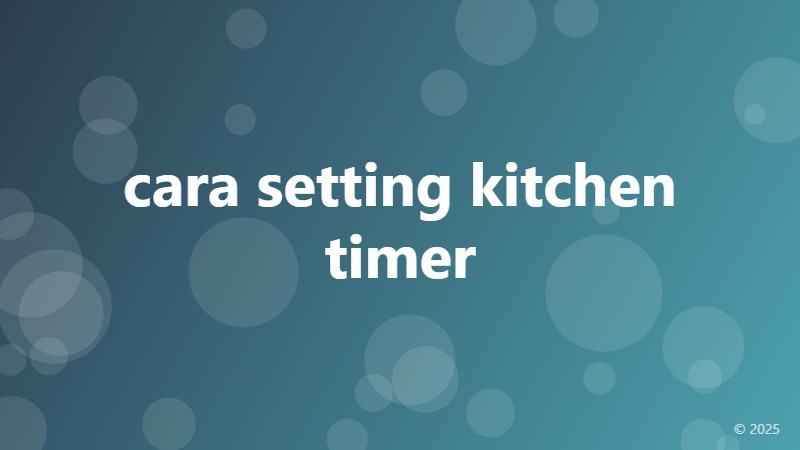cara setting kitchen timer

Why You Need a Kitchen Timer
Are you tired of overcooking or undercooking your meals? Do you find yourself constantly checking on your dishes, only to be disappointed by the results? A kitchen timer can be a game-changer in the kitchen, helping you cook with precision and confidence. But, do you know how to set a kitchen timer correctly? In this article, we'll show you the easy steps to follow to get the most out of your kitchen timer.
Choosing the Right Kitchen Timer
Before we dive into the steps of setting a kitchen timer, it's essential to choose the right one for your needs. There are different types of kitchen timers available, including digital, mechanical, and app-based timers. Digital timers are the most popular choice, offering a clear display and easy-to-use interface. Mechanical timers, on the other hand, are more traditional and can be a great option for those who prefer a more analog approach. App-based timers are also gaining popularity, allowing you to set reminders and timers on your smartphone or tablet.
How to Set a Digital Kitchen Timer
Setting a digital kitchen timer is relatively straightforward. Here's a step-by-step guide to follow:
1. Press the "Start/Stop" button to activate the timer. This button is usually located at the top of the timer.
2. Use the "+" and "-" buttons to set the desired cooking time. You can usually set the time in minutes and seconds.
3. Press the "Start" button to begin the countdown.
4. Once the timer goes off, press the "Stop" button to silence the alarm.
How to Set a Mechanical Kitchen Timer
Setting a mechanical kitchen timer requires a bit more effort, but it's still a simple process:
1. Turn the dial to the desired cooking time. Make sure to align the arrow with the correct time.
2. Press the timer's button to start the countdown.
3. When the timer goes off, turn the dial back to the "0" position to silence the alarm.
How to Use an App-Based Kitchen Timer
App-based kitchen timers offer more flexibility and convenience. Here's how to set one:
1. Open the kitchen timer app on your smartphone or tablet.
2. Set the desired cooking time using the app's interface.
3. Press the "Start" button to begin the countdown.
4. When the timer goes off, you'll receive a notification on your device.
Tips and Tricks for Using a Kitchen Timer
Here are some additional tips to help you get the most out of your kitchen timer:
• Always set a timer a minute or two less than the recommended cooking time to avoid overcooking.
• Use a kitchen timer for multiple dishes, such as when cooking a meal with multiple components.
• Consider investing in a timer with a magnetic back or a clip, making it easy to attach to your kitchen surface.
By following these simple steps and tips, you'll be well on your way to becoming a kitchen timer pro. Say goodbye to overcooked meals and hello to perfectly cooked dishes with ease!